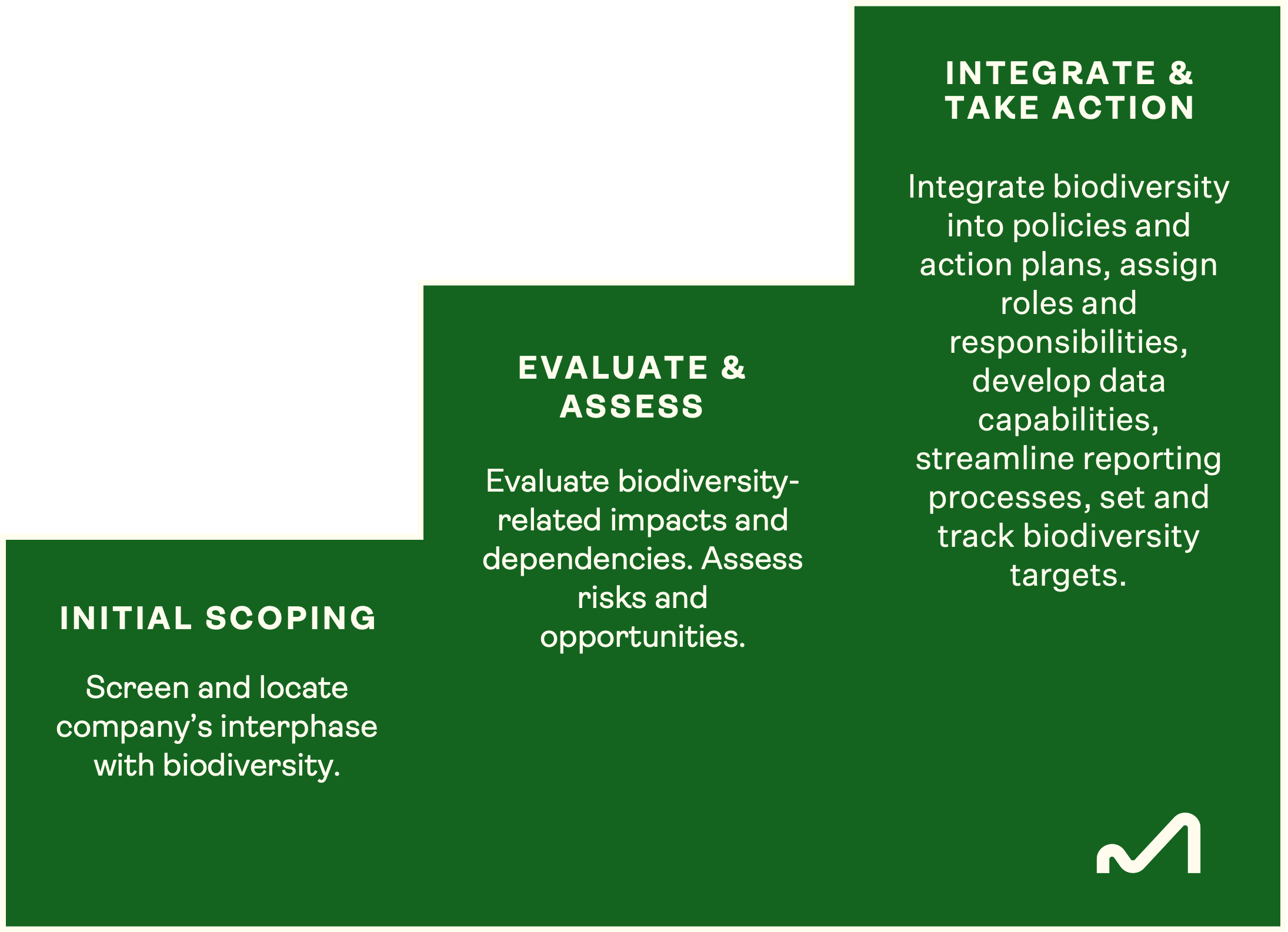25 March 2024
Why and how should companies take biodiversity action?
Antti Maunula
Head of Regulatory Services
25 March 2024
Why and how should companies take biodiversity action?
Antti Maunula
Head of Regulatory Services
Biodiversity is a hot topic on the corporate responsibility agenda.
Companies face increasing pressure to measure, disclose, and mitigate their adverse impacts on nature and biodiversity. The trend is driven by many simultaneous developments. For many, the urgency comes from the recent and upcoming regulations, especially from the European Union (EU).
For example, the Corporate Sustainability Reporting Directive (CSRD) requires companies to report on their material impacts, risks, and opportunities on biodiversity and ecosystems. The EU Deforestation Regulation demands importers of certain commodities, such as cocoa and palm oil, to prove that those do not originate from recently deforested land or have contributed to forest degradation.
But regulation is not the only driver behind increasing demands for disclosures.
Financial institutions are recognizing nature loss as a systemic risk to financial systems and economies, and there are increasing disclosure requirements by banks and insurers. Also, consumers and customers demand transparency on nature impacts.
Shift of focus from own operations to value chains
Traditionally, environmental impacts have been addressed in companies’ own operations, and there are established processes of environmental permits and impact assessments for industrial sites, urban development, and other land-use change, for example.
The new regulations require companies to address environmental impacts of their value chains. Companies do not only need to understand their biodiversity impacts and risks, but also those of their suppliers and customers.
New ways to manage supply chains, and to ensure traceability of products’ origins, will be necessary to comply with the new requirements.
Also, it is worth noting that biodiversity is a more complex topic than carbon. Therefore, the toolbox we have for climate action is not directly applicable to biodiversity. With biodiversity, we must act with less detailed data and accept more assumptions.

How to take biodiversity action?
Companies’ biodiversity impacts, dependencies, risks, and opportunities vary greatly.
Whereas agriculture is fully dependent on pollination of crops, freshwater availability and healthy soils, a software company might not have such direct dependencies. And obviously, biodiversity impacts caused by a mining company and a restaurant chain, for example, are vastly different.
From a business perspective, the following viewpoints are relevant to most companies:
Risk management:
Amid biodiversity loss and climate change, identifying nature-related risks becomes paramount. Businesses are dependent on natural resources and ecosystem services – either directly or indirectly.
Streamlining reporting:
Regulation and stakeholders are demanding more transparency on nature-related issues. Developing streamlined processes to handle and disclose biodiversity data alleviates reporting burden.
Building data readiness:
Data collection requires effort, especially from those companies that have not done it yet. Assessing data gaps and developing new internal competences will take time, and it is good to start the work proactively.
Competitive advantage:
The overall trend is clear: companies will need to change their business models, products, and services to meet the demands of low-carbon circular economies. The frontrunners will gain competitive advantage by better responding to regulations’, customers’, and financial institutions’ demands.
Getting started
The lack of methods and tools – and the perception of biodiversity as a complex topic – may discourage corporate action. There are gaps in data, and many do not know how to approach the overlapping frameworks and reporting requirements.
Despite these challenges, we argue, there is a strong rationale for going forward with biodiversity work, even with immature data and tools.

Companies can start their biodiversity work today, from their own needs and priorities. Those who are starting their journey may find a light, holistic screening of key biodiversity issues valuable. This initial screening may pave the way for more in-depth evaluations and assessments, ensuring the resources are spent on the right topics when strategies and actions are planned.
Let's talk about how to make this happen
We help you set the foundation and grow into becoming true business leaders in vast sustainability transformations.
Mia Folkesson
Managing Partner
mia@impaktly.com
Let's talk about how to make this happen
We help you set the foundation and grow into becoming true business leaders in vast sustainability transformations.
Mia Folkesson
Managing Partner
mia@impaktly.com